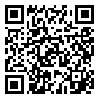BibTeX | RIS | EndNote | Medlars | ProCite | Reference Manager | RefWorks
Send citation to:
URL: http://jdisabilstud.org/article-1-1146-en.html
2- Islamic Azad University, Ashtian Branch
Background & Objective: Attention-deficit hyperactivity disorder (ADHD) as one of the most prevalent childhood disorders, which can have negative impacts on all aspects of personal life, has always been a hotspot for mental health professionals. Because of complications and negative consequences of this disorder, which include aggression, object-manipulation, high-risk behaviors, poor school performance, and academic failure, psychologists, psychotherapists, and educational experts have tried to address and treat this disorder by various methods. These children hardly can sit around; instead, they are fidgety and continuously in motion, and especially in a classroom setting, which requires sitting quietly for an extended period paying attention to classroom topics, they are in serious trouble. In the long run, they are exposed to continuous misconception and abuse, especially in their house by their parent. So, improvements in the parent-child relationship can decrease interpersonal issues, which, in turn, results into a correction in parents’ characters/behavior style regarding their children, while improving problematic behaviors of these children too. Current research, therefore, targeted the effectiveness of Brain Gym and Child-parent Relationship therapy programs on the symptoms of this disorder.
Methods: This research was a control group pretest-posttest design, a type of quasi-experimental research design. The statistical population included all the children who have ADHD who attended consultation centers in the city of Gorgan. Of those qualified children aged 7-10, which had no other physical or mental disorder, having at least one literate parent voluntarily participating in the research, we selected 30 children, with their parents, randomly clustered into 3 groups; 10 children in Brain Gym group, 10 children in Child-parent Relationship therapy group, and 10 children in the control group. Before the intervention, we pretested these groups using the Conners’ Parent’s Questionnaire. Then, the Brain Gym test group participated in an educational program consisting of 8 sixty-minute sessions comprising 26 Brain Gyms. In the Child-parent Relationship therapy group, parents participated in 10 ninety-minute sessions of Child-parent Relationship therapy in which they took assignments, their performances evaluated, and proper feedback and recovery training given to them; no training program implemented in the control group. After finishing the therapy methods, the three groups underwent the posttest, and after two months, all these groups were followed up to evaluate the sustainability of the therapeutic effects. For the sake of follow-up, and to deduce and understand the association of descriptive statistics variables, including frequency, percentage frequency, mean, standard deviation, standard error, we utilized repeated measures design — the analysis performed by SPSS software (version 24).
Results: The results suggest that both therapy methods were effective in decreasing ADHD symptoms (p<0.001), however, the significance of Brain Gym results were higher than that of Child-parent Relationship therapy (p<0.001). These findings indicate that those methods meaningfully decreased the symptoms of ADHD children comparing to the control group. Additionally, the results suggest that the significant difference between the test group and the control group, about ADHD symptoms of these students, were sustainable after two months of follow-up.
Conclusion: Based on the results of this research, Brain Gym and Child-parent Relationship therapy training program can improve ADHD symptoms, so we suggest that to enhance ADHD children’s condition, such training methods to be implemented in various educational/therapy centers as well as in the house by their parents, as a complementary therapy for these children. We suggest that tailored, coherent training programs be made for parents and teachers to handle these children strategically; we also recommend that, during training sessions, the fathers’ potentials to be utilized more than before, while studying more about the effectiveness of their role.
| Rights and permissions | |
 |
This work is licensed under a Creative Commons Attribution-NonCommercial 4.0 International License. |




